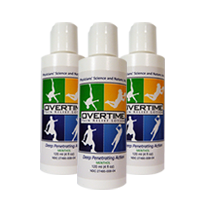Long-lasting pain relief you can trust
Joint Pain Relief
What is joint pain?
Joints are complex anatomical structures consisting of two bones separated by a smooth surface of cartilage and wrapped tightly in a joint capsule comprised of ligaments and tendons. The joint space is filled with a clear fluid, called synovial fluid, which nourishes the cartilage. The inner layer of the joint capsule is the bursa.
A painful joint is swollen, stiff, and with a significant loss of function. Inflammation of the bursa or tendons can result in severe joint pain. Symptoms of joint pain include pain in and around the joint, swelling and tenderness of the joint, stiffness, hot joints, or clicking and grinding of the joint with movement.
What causes joint pain?
Joint pain is typically the result of injury, abnormality, or wear of the joint structures. With a joint sprain, a sudden force or hyperextension of the joint partially or fully tears the ligaments and tendons. Age and excessive wear of any joint wears down the delicate cartilage, which is degenerative joint disease or osteoarthritis. Metabolic conditions, such as gout, can result in arthritis of a joint, especially of the hands, ankles, and feet. Autoimmune diseases, such as rheumatoid arthritis or systemic lupus erythematosus, result in severe damage to the joints.
Joint pain and loss of function may be so severe that activity levels are drastically reduced, even to the point of being wheelchair bound or bedridden.
How to treat joint pain?
Many cases of joint pain may be resolved with rest or a brief course of anti-inflammatory medications and topical heat. For severe pain orals steroids may be required. Occasionally a physician will recommend directly injecting the joint with steroids. Surgery may be required for severe tendon or ligament tears, such as meniscus tears in the knees.
Inflammatory diseases such as rheumatoid arthritis may require aggressive treatment with a specialist. Diseases such as osteoarthritis have no cure, with few treatments that relieve the pain or improve function.
The standard treatments for joint pain are over-the-counter pain medication, prescription narcotic and non-narcotic pain medication, rest, physical therapy, and steroid injections. These treatments are typically not sufficient and, in the case of oral medication, have serious side effects such as sedation, nausea, constipation, and addiction. Extended use of over-the-counter medications, such as ibuprofen, naproxen, and acetaminophen, can cause stomach ulcers and kidney, heart, or liver failure.
Sudden severe pain, especially in the chest, arms, or head, pain associated with fever, numbness or weakness, or pain in any area of the body that does not resolve after a couple of weeks, should always be evaluated by a physician to be certain that other medical conditions, including heart disease, stroke, infections, or even cancer is not the underlying cause of pain.
What are joint pain treatment alternatives?
Developed by a UCLA-trained, pain specialist medical physician, Overtime Pain Relief Lotion is clinically tested, safe, and effective to reduce inflammation and help temporarily relieve minor headaches and pains from underlying muscle, arthritis, joint, neck and back pain symptoms.
The unique formula of Overtime Pain Relief Lotion combines seven natural, scientifically proven pain relieving ingredients and anti-inflammatory agents. The lotion formula penetrates deeper and faster into aching tissue for fast, long-lasting relief. No other topical pain product has been proven to be stronger than Overtime Pain Relief Lotion.
Overtime Pain Relief Lotion is an FDA registered over-the-counter product that’s available to you direct without a prescription, manufactured in the USA in an FDA-Certified Lab, and recommended by physicians across America.
Order now at no risk
Try Overtime Pain Relief Lotion for yourself and find out why nearly 90% of pain sufferers who use our pain cream ask for more again and again. With our 30-day money-back guarantee, you’ve got little to lose, except your pain.



